Getting Started
The PC RMCA program starts by a double click on its name in the Windows Explorer (or typing 'rmca' in a DOS box opened in the directory containing rmca.exe and the data files). A window is opened. You are prompted to give the entry filename (here cubig, the test file) :
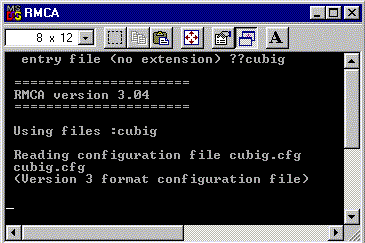
There are two differences with the original RMCA software. The .his file is not created, and the timelim and timesav parameters have different significations. Instead of being the time the program should run for, in minutes, timelim is now the total number of moves generated before the program will stop. Timesav is the interval number or generated moves at which the results should be saved to the output file. Also the file containing the experimental data (cusq.dat here) is given without the .dat extension in the main data file (cubig.dat here).
Get the manual RMCA.ps and the Fortran source code at the RMCA FTP server.
Running the test file, you should see at the end (the Chi**2 oscillates around 5 after 15000 accepted moves) :
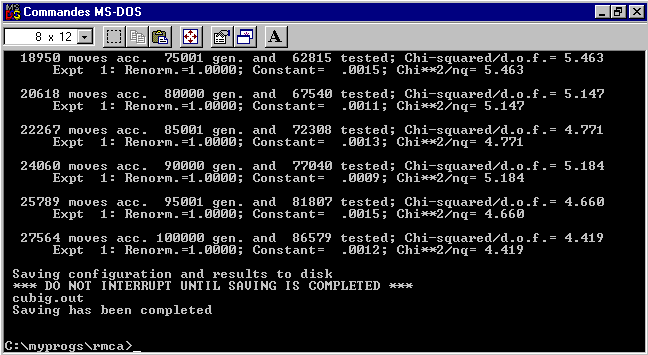
The resulting fit of S(Q) is the following :
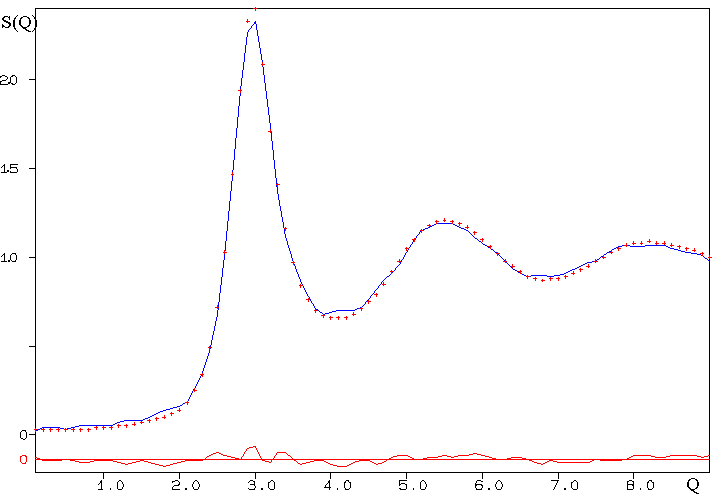
How to use Random :
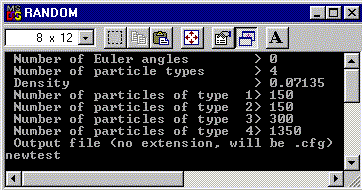
How to use Moveout (T=True, F=False) :
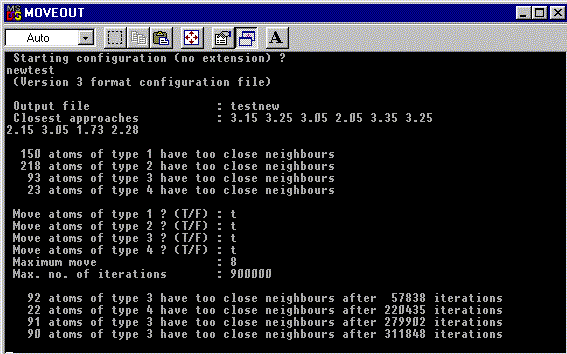
How to use Crystal in "automatic mode":
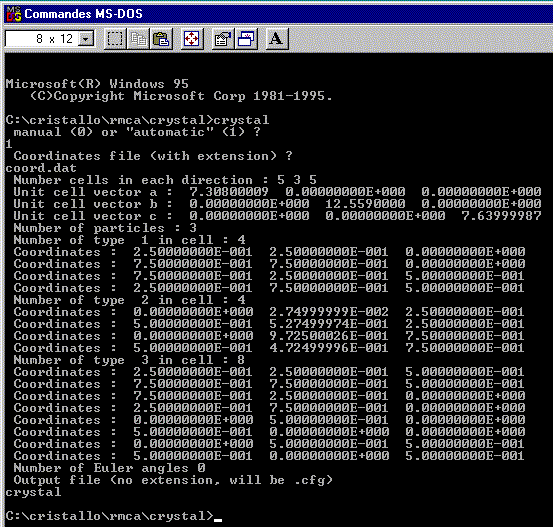
Copyright © October 1997 - Armel Le Bail
See also the GLASSVIR and NOCHAOS related programs and an application to fluoride glasses